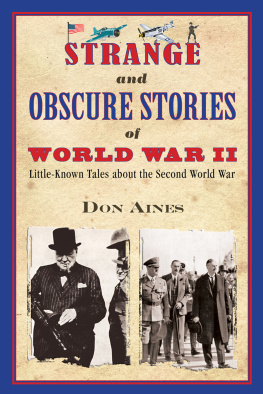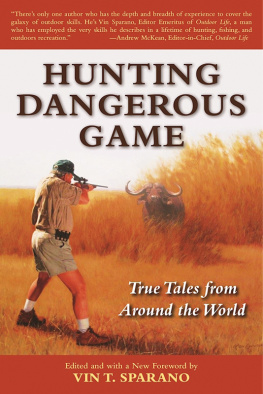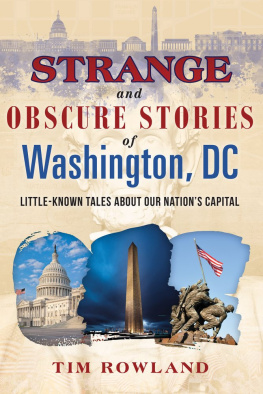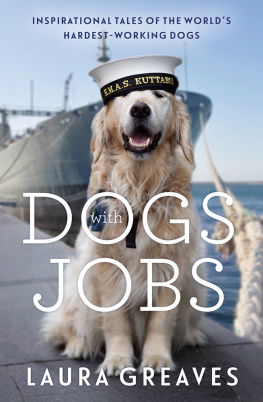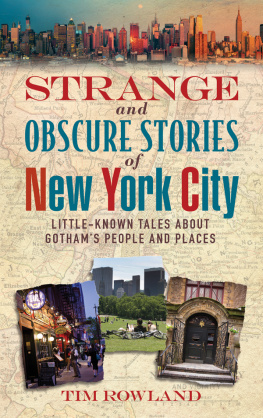

Copyright 2020 by Don Aines
All rights reserved. No part of this book may be reproduced in any manner without the express written consent of the publisher, except in the case of brief excerpts in critical reviews or articles. All inquiries should be addressed to Skyhorse Publishing, 307 West 36th Street, 11th Floor, New York, NY 10018.
Skyhorse Publishing books may be purchased in bulk at special discounts for sales promotion, corporate gifts, fund-raising, or educational purposes. Special editions can also be created to specifications. For details, contact the Special Sales Department, Skyhorse Publishing, 307 West 36th Street, 11th Floor, New York, NY 10018 or .
Skyhorse and Skyhorse Publishing are registered trademarks of Skyhorse Publishing, Inc., a Delaware corporation.
Visit our website at www.skyhorsepublishing.com.
10 9 8 7 6 5 4 3 2 1
Library of Congress Cataloging-in-Publication Data is available on file.
Cover design by Mona Lin
Cover images: Getty Images
Interior images: Getty Images
Chapter icon: Getty Images, GeorgePeters, DigitalVision Vectors
Print ISBN: 978-1-5107-4685-5
Ebook ISBN: 978-1-5107-4686-2
Printed in the United States of America
Contents

Introduction

M y father, two uncles, and an aunt were World War II veterans.... Yeah, them and sixteen million other men and women.
Dad, Don Sr., was born in 1926, the last birth year in which men who reached draft age were able to go through basic and advanced training and be deployed overseas for combat. He fought in Germany during the last weeks of the war in Europe and, thankfully, came through without a scratch. He was the only one of the four to make the military a career, serving in the Korean War and Vietnam War along the way. There were other deployments: Japan in the weeks before North Korea invaded South Korea, West Germany during the 1950s, and Turkey in the 1960s. Then there were the assignments to stateside garden spots such as Fort Benjamin Harrison, Indiana; Fort Riley, Kansas; Fort Gordon, Georgia; Fort Leavenworth, Kansas; and the Pentagon. Thats the short list. Army bases were not bad places for a kid to live, especially if your father was an officer. There was usually a parade ground with an artillery piece or twoI remember Fort Benjamin Harrisons parade ground had an M4 Sherman tank and a light tank, possibly an M3. We did not always live in base housing. The years in Washington were spent in an Ozzie and Harriet suburb, and all four of us sons got through the same high school because The Colonel, as we boys called him, sandwiched two three-year Department of Defense assignments around his one year in Vietnam.
Dad liked watching baseball while lying on the couch with his eyes closed, and he liked watching westerns. He had no interest in war movies, although he found 1965s spot-the-star cinematic turkey The Battle of the Bulge laughable.
Uncle Phillip Aines was a bespectacled man with chiseled features, somewhat sturdier in build and slightly shorter than my six-foot, three-inch father. A serious student, he opted out of the Advanced Specialist Training Program, which kept some of the nations best and brightest from seeing combat by enlisting them as privates while they took college courses. Phil was wounded serving with the U.S. Armys Tenth Division during the Ardennes offensive, probably by shrapnel from artillery or mortar fire. All we knew growing up was he had a bad leg, although he did not have a noticeable limp. I learned later he still had two legs because he won an argument with doctors who wanted to amputate the injured one. Phil went on to earn a PhD at Cornell, become a vice president of two major consumer-product corporations, and live a long life.
I know less about my maternal uncle, Jay Leon. He and Miriam, my mothers sister, settled in Phoenix sometime after the war. Miriam joined the Womens Army Corps during the war, and Jay was in the U.S. Army in the Pacific. Because they lived so far away from us, we didnt see Jay and Miriam all that many times, but Jay always struck me as a blunt-spoken bantamweight tough guy.
Those four veterans have passed from the scene, as have more than fifteen million other Americans who served during the war. The National WWII Museum estimates the number of survivors in 2020 at fewer than four hundred thousand. All would be in their nineties, with more than a few passing the century mark.
When I was a boy, none of these guys talked much about the war. Fortunately, my father set his experiences down on paper late in his life. His was not a strange or obscure story, just that of another serviceman doing his best to avoid being shot, shot down, incinerated, drowned, blown up, captured, or executedsame as most of the soldiers, sailors, airmen, and marines. They returned from the war to big cities and small towns, built the suburbs, and carried on with life. That goes also for the tens of millions of men and women from countries across the globe who served and fought in the war and the hundreds of millions of civilians who fell within its awful grasp.
Throughout this book will be quite a few references to films, not all of them flattering to Tinseltown. The reason is simple: Most people have seen a lot more World War II movies than they have read books on the war. Ninety minutes or two hours of sitting in a theater or watching television is easier than sitting down many more hours with a book. But if you are looking for a history lesson, Hollywood is not the place to find one.
There are a lot of numbers in the book, and some, even from reliable government sources, can vary depending on who did the counting. A staff sergeant with the Department of Defense POW/MIA Accounting Agency advised me that the official numbers for missing service personnel can vary from week-to-week. Some might also quibble with how many tons of explosives were packed into the bow of the Campbeltown when it rammed the drydock at St. Nazaire, or the top speed of a Hellcat, or the number of mules the army purchased in 1943, or how many soldiers served as extras in Kolberg. In most cases, numbers from official sources might not be exactly the same but fall within a reasonable margin.
Whenever practical, official military resources, museums, and historical sources are used. Books, magazine articles, movies, documentaries, websites, and videos were also mined to come up with these stories and are appropriately credited.
The culture-wide experience of the Second World War in America has only been matched a few other times in our history. The War of Independence, Civil War, and World War I also touched every city, town, village, and hamlet. Consider that those 16 million men and women in uniform represented about one person out of every eight of the 130 million Americans. The numbers of civilian males between eighteen and forty in towns and cities plummeted, with women and older workers filling huge gaps in the workforce. Today, about one out of every hundred Americans serve in the military out of a population of 330 million.
Each man and woman from the World War II era had a unique story. It belonged only to them.
Among those are some strange and obscure storiesmore than enough to fill a few thousand books. Here are a few of them.
Next page
